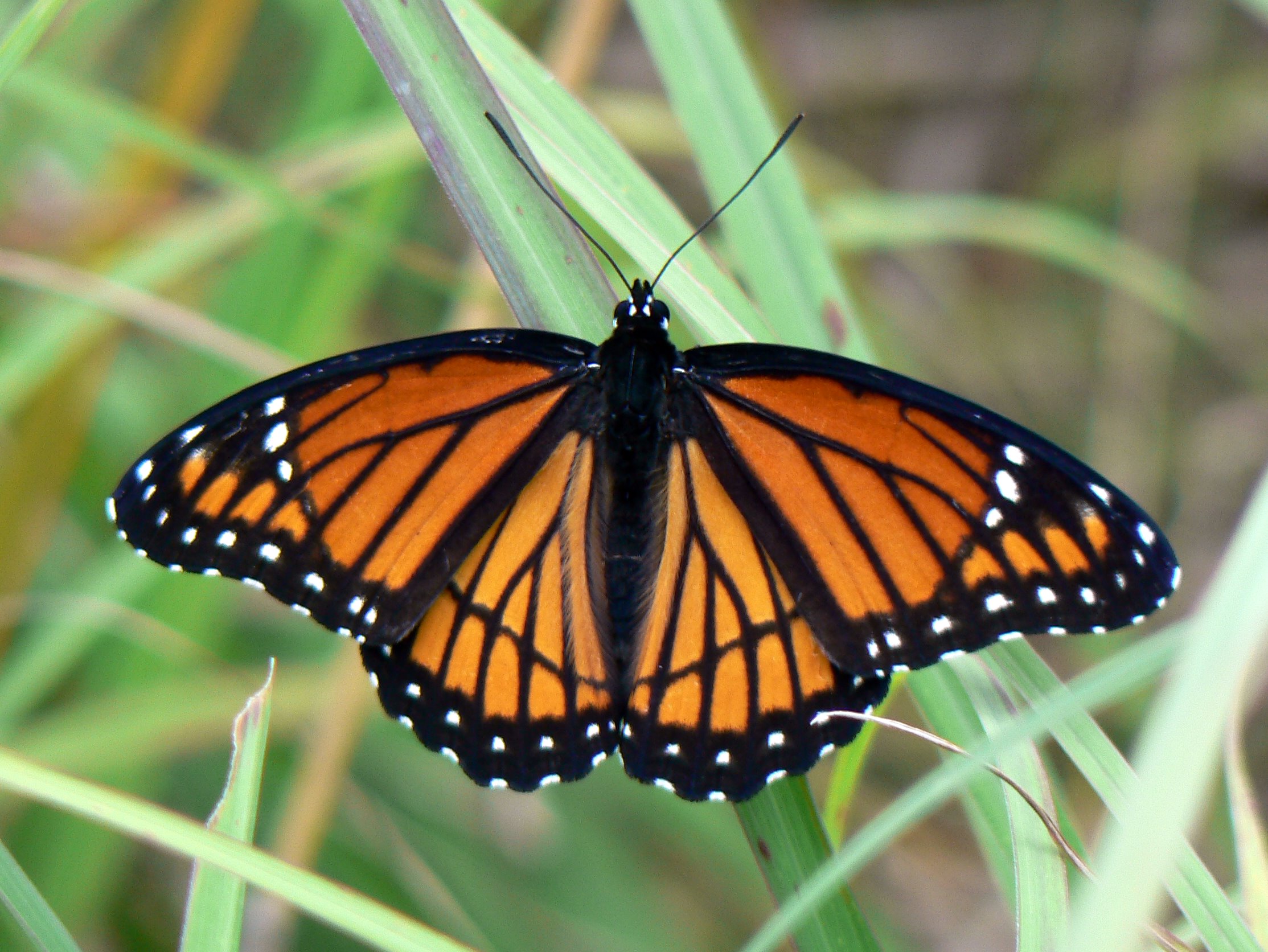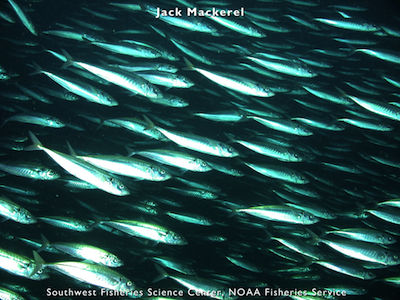Defense
It is a dog-eat-dog world out there, so animals have to defend themselves. The main trick to surviving is not being eaten or killed. How do animals defend themselves from other animals that wish them harm? Defense techniques include:
Viceroy butterfly. Image from here.

Monarch butterfly. Image from here.
A school of jack mackerel fish. Image from here.

This cat looks snake-like as it hisses.
- Crypsis: hiding in plain sight. Animals that are camouflaged are said to have cryptic coloration.
- Alarms: yelling "murder" is a good way to make people back off, or at least alert your family members to come help you. If they can’t help, they can at least save themselves. Many birds and mammals use alarm calls to warn others of predators approaching. Belding’s ground squirrels use two types of alarm calls: one to warn of a less serious predator, usually approaching on the ground, and the other to warn of an immediate danger, often a raptor circling overhead.
- Deterrence: Tasting bad or being poisonous is a good way to make predators not want to eat another bite. Caterpillars seem like they would be a good snack since they don’t move fast and are easy to catch. But many caterpillars have spines that sting, or are poisonous. These caterpillars often advertise their danger with bright colors or obvious spines sticking out of their backs. Birds learn to avoid caterpillars that make them sick. Skunks use another tactic to deter predators—bad smell. Having skunk fumes in your face is a sure way to lose your appetite.
- Mimicry: Some animals are not poisonous themselves, but they pretend to be. They do this by mimicking the colors and/or look of an animal that is poisonous. A famous example of this is the Monarch and Viceroy butterflies. Both butterflies are orange and black, with one big difference: Monarch butterflies are poisonous and Viceroys are not. By having the same coloration as the Monarchs, Viceroys protect themselves from predators who avoid Monarchs because of their poison. Pretty sneaky, right? However, if the mimics try to live somewhere other than where the poisonous Monarchs are, the mimicry won’t work. If a predator has never been exposed to a poisonous orange butterfly, it will not know that orange butterflies might taste bad and won’t hesitate to scarf down a few Viceroys.

Viceroy butterfly. Image from here.

Monarch butterfly. Image from here.
- Safety in numbers: Forming herds or schools is an effective defense technique. Many fish swim in large groups called schools that can confuse a predator because of all the tiny bodies moving. This also allows most of the fish to dodge the predator as it approaches the school.

A school of jack mackerel fish. Image from here.
- Running away: Self-explanatory, no? Many prey species are really fast runners. Some animals combine running with other techniques: squid use a squirt of ink to confuse predators, then swim away and hide before the ink has cleared.
- Fighting back: Surprisingly uncommon, but still a useful technique. Most animals try to avoid conflict if at all possible. Engaging in paw-to-paw combat is too high stakes to do lightly. The energetic costs and risks of injury or death are high in any sort of fight between two animals. This is why most animals give some sort of warning such as growling, hissing, standing up to show their size, or showing their teeth. They hope to intimidate their potential fighting partner into surrendering before the fight even begins.
Brain Snack
When housecats hiss, they are mimicking snakes. Notice how your pet draws his head back, his ears go down, and he shows his teeth when he hisses? The cats don’t know they are imitating snakes, but scientists believe cat hissing developed as a mimicry defense mechanism because it looks and sounds very similar to a python ready to strike.
This cat looks snake-like as it hisses.